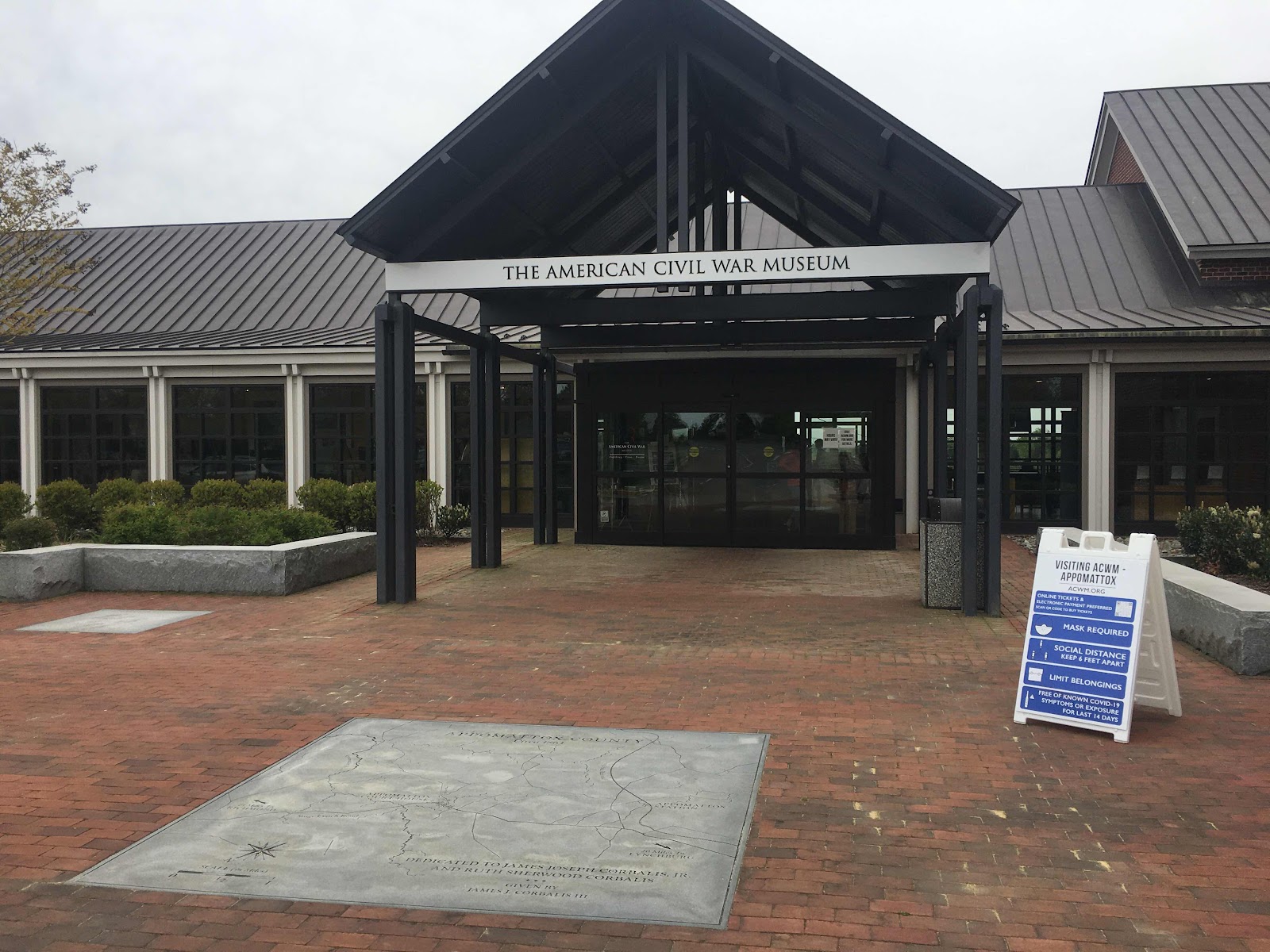As the sun rose on April 9, 1865, General Lee clung to the belief that he could still win the war. He had 8,000 men and what remained of the Confederate Cavalry lined up for a battle just west of the village of Appomattox Court House. However, Lee shortly learned that Union troops were preparing for a fight and more Federal reinforcements were on their way. Lee realized his war was over and sent a message to Grant. Grant sent a message back that he would not discuss a peace agreement, but could consider a military surrender and asked Lee to select a meeting site. Lee send an aide to Appomattox Court House and came upon Wilmer McLean who ultimately reluctantly offered the use of his home for the meeting.
The village of Appomattox Court House has been faithfully restored to what it looked like in April 1865. We were able to go into McLean’s home, see the parlor where Grant and Lee met, and view the slave quarters behind the home.
There are a lot of myths surrounding Lee’s surrender to Grant. One of them involves Lee’s offering his ceremonial sword that he wore, to Grant as part of the surrender. However, that did not happen. In fact according to Grant: “The much talked of surrendering of Lee’s sword and my handing it back, this and much more that has been said about it is the purest romance.”

One thing that is true is that Grant’s terms of the surrender were very generous. He required only that the Confederate surrender Confederate property. While the soldiers turned in about 27,000 guns, Grant permitted them to retain their side arms, their baggage, and their personal horses so they could make it home safely. He also agreed to provide rations of food to the starving Confederate soldiers. To ensure that the surrendering soldiers could make it home safely, each was provided with a “parole pass” that allowed them free transport (if necessary) and federal food rations along the way. Two printing presses were set up to print about 30,000 parole passes for the Confederate soldiers.

One thing that is true is that Grant’s terms of the surrender were very generous. He required only that the Confederate surrender Confederate property. While the soldiers turned in about 27,000 guns, Grant permitted them to retain their side arms, their baggage, and their personal horses so they could make it home safely. He also agreed to provide rations of food to the starving Confederate soldiers. To ensure that the surrendering soldiers could make it home safely, each was provided with a “parole pass” that allowed them free transport (if necessary) and federal food rations along the way. Two printing presses were set up to print about 30,000 parole passes for the Confederate soldiers.
In addition to seeing the replica of Appomattox Court House, we also spent time in a very nice Civil War Museum. One of the things that several of us learned is that Lee’s surrender at Appomattox was not the end of the war, but could be more accurately described as the “beginning of the end.” Once Lee surrendered his army, several more generals surrendered over the next several months. But it would be more than 16 months before President Andrew Johnson would declare a formal end to the conflict in August 1866.
On Good Friday April 14, 1865, five days after General Lee’s surrender, President Lincoln was shot by John Wilkes Booth at the Ford Theatre. He died the next day.

No comments:
Post a Comment